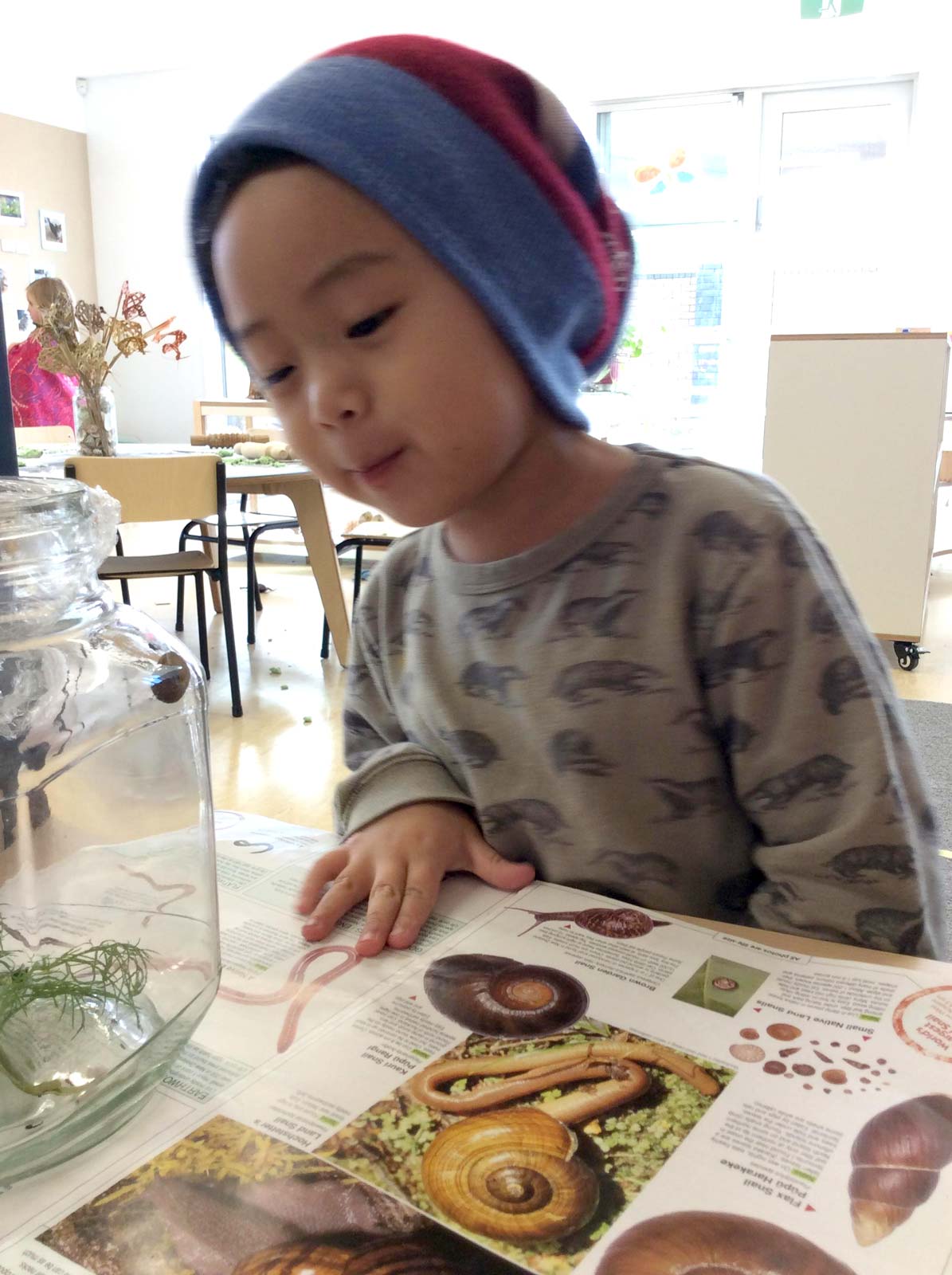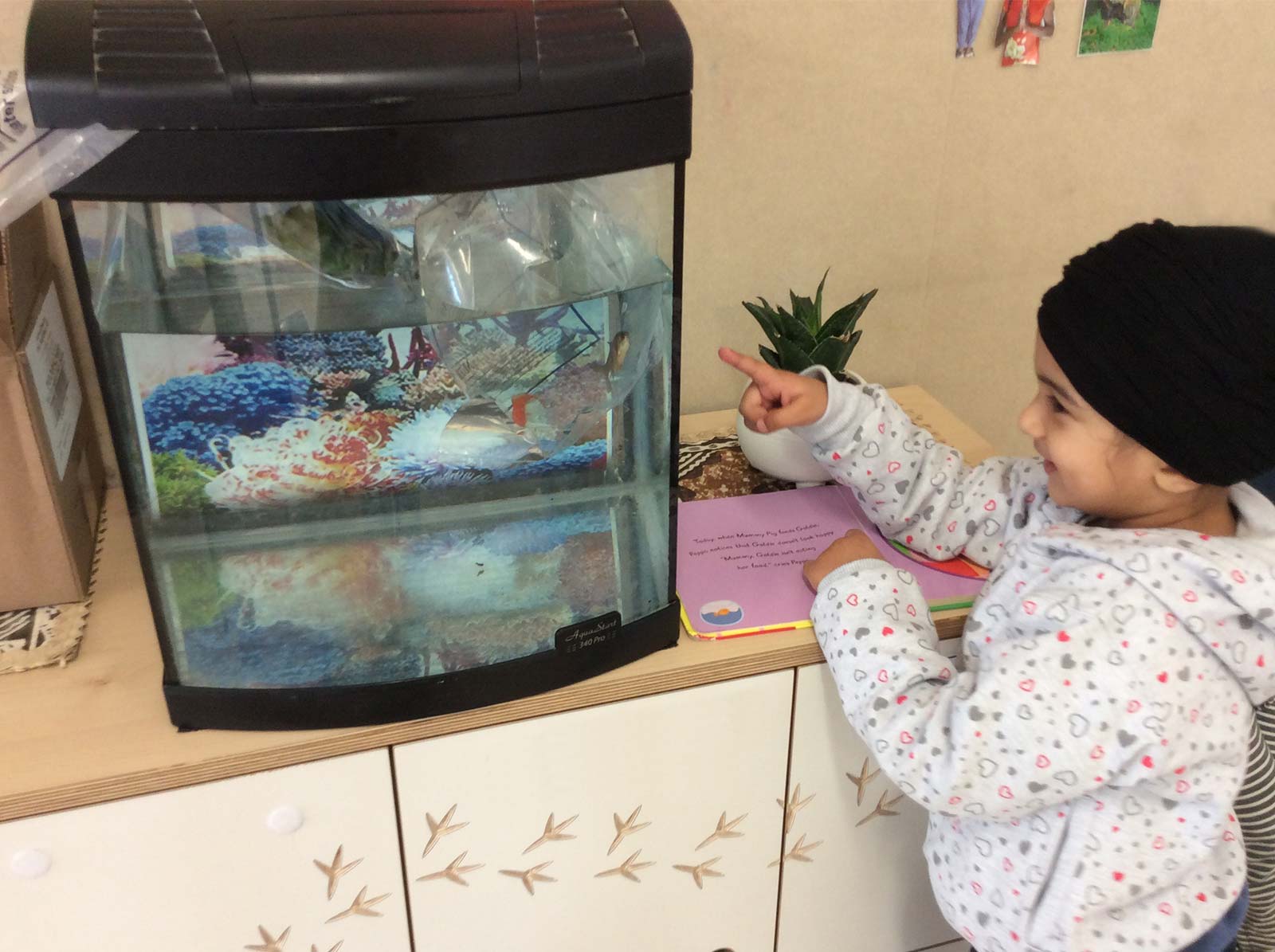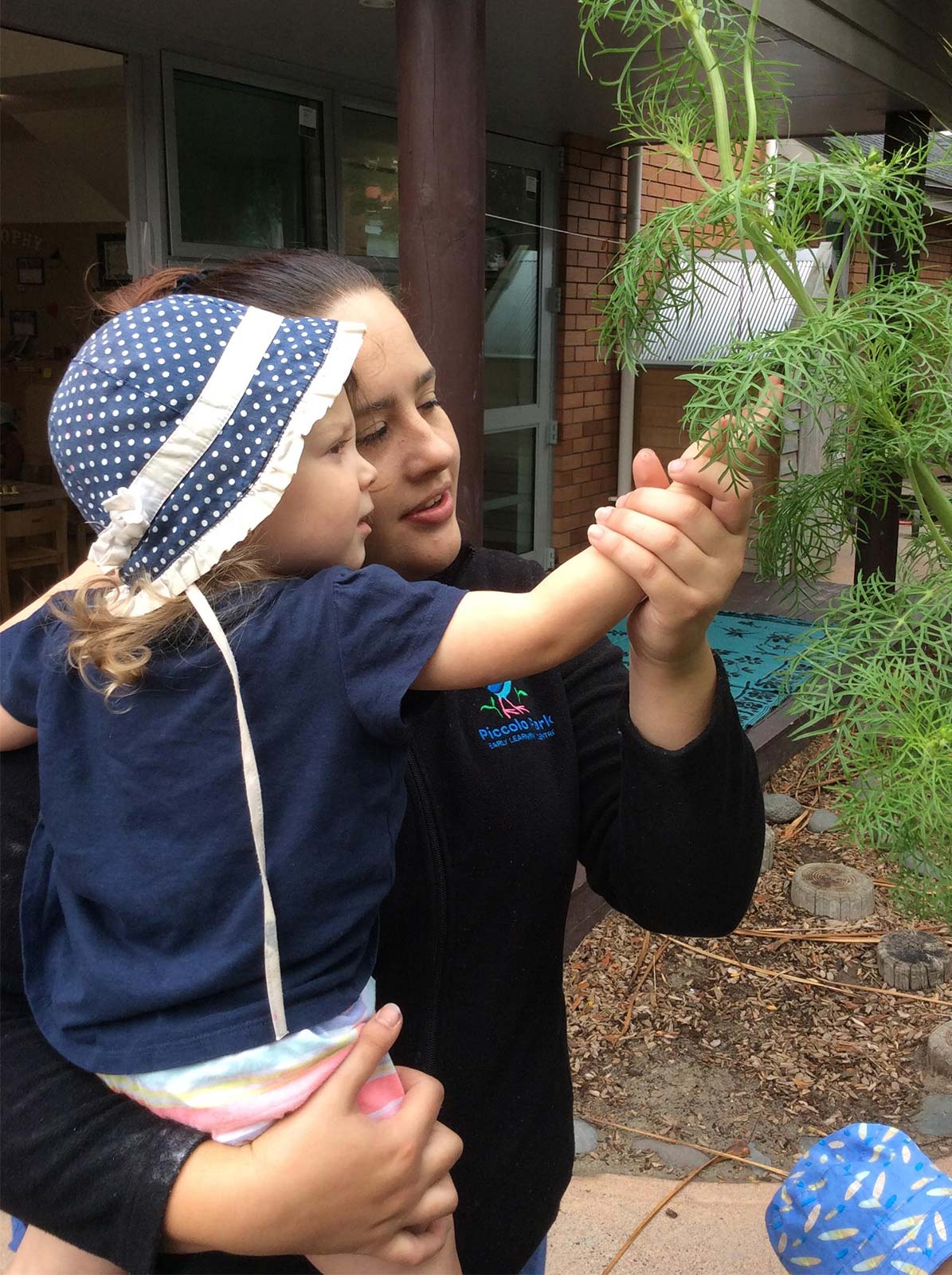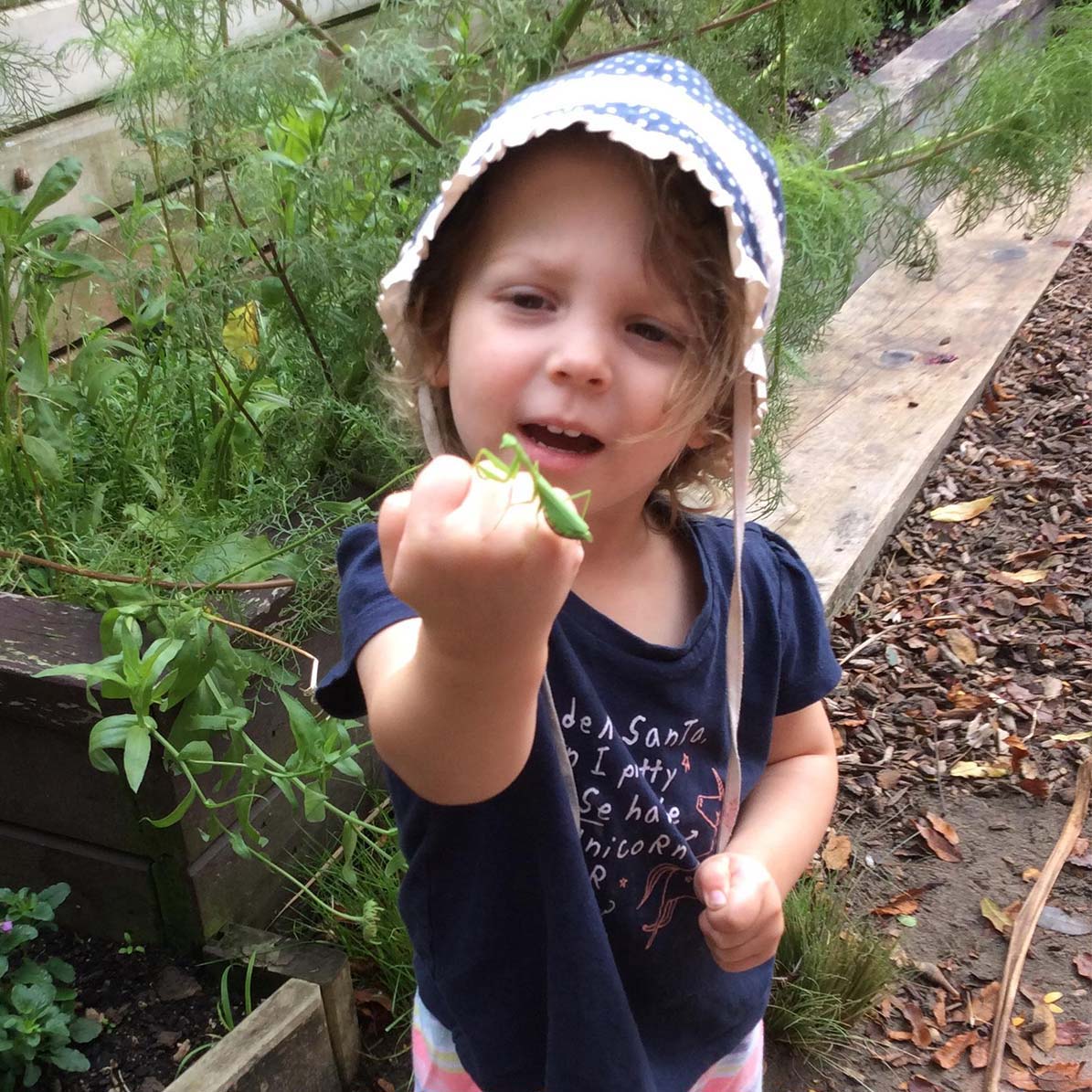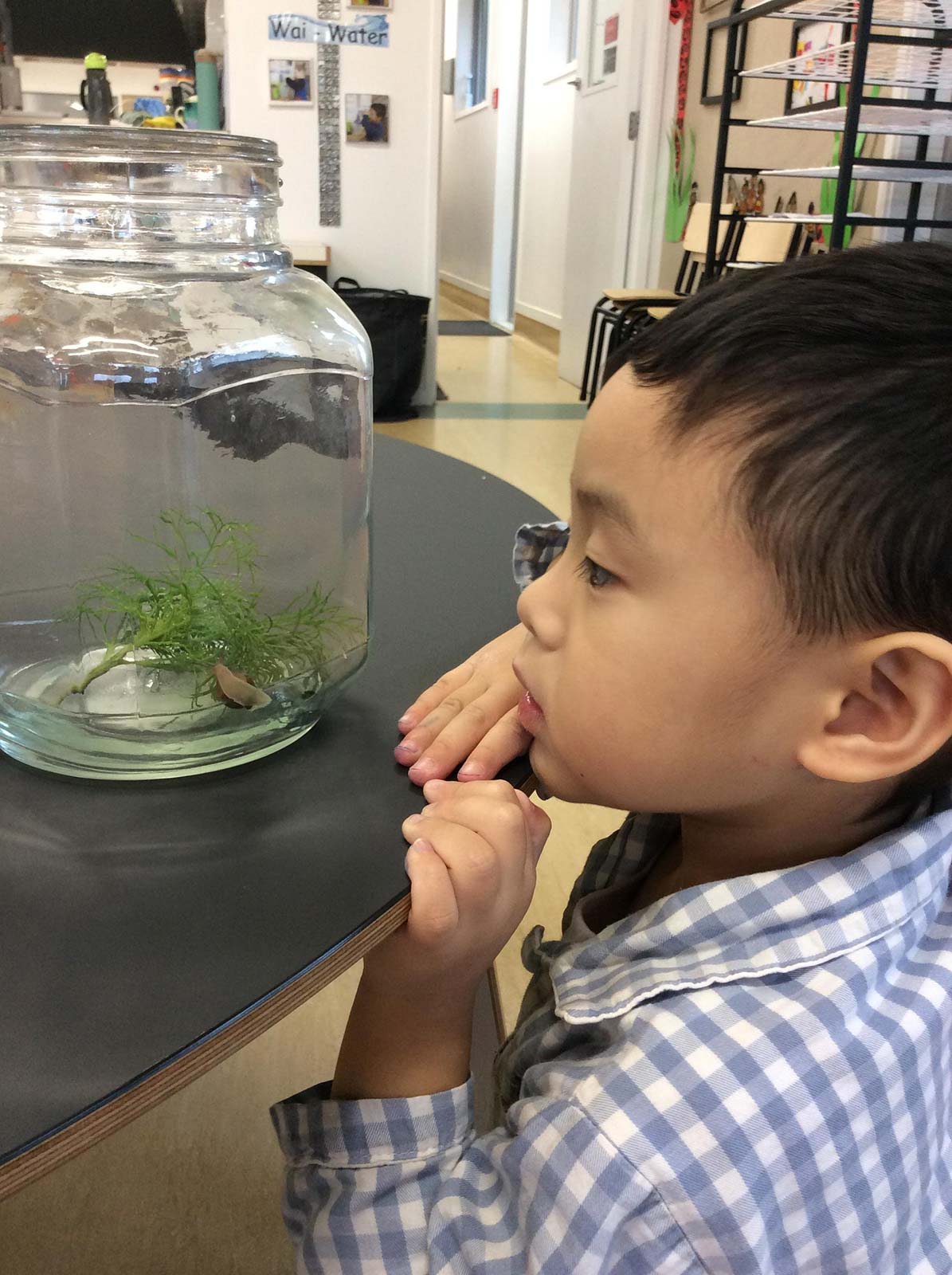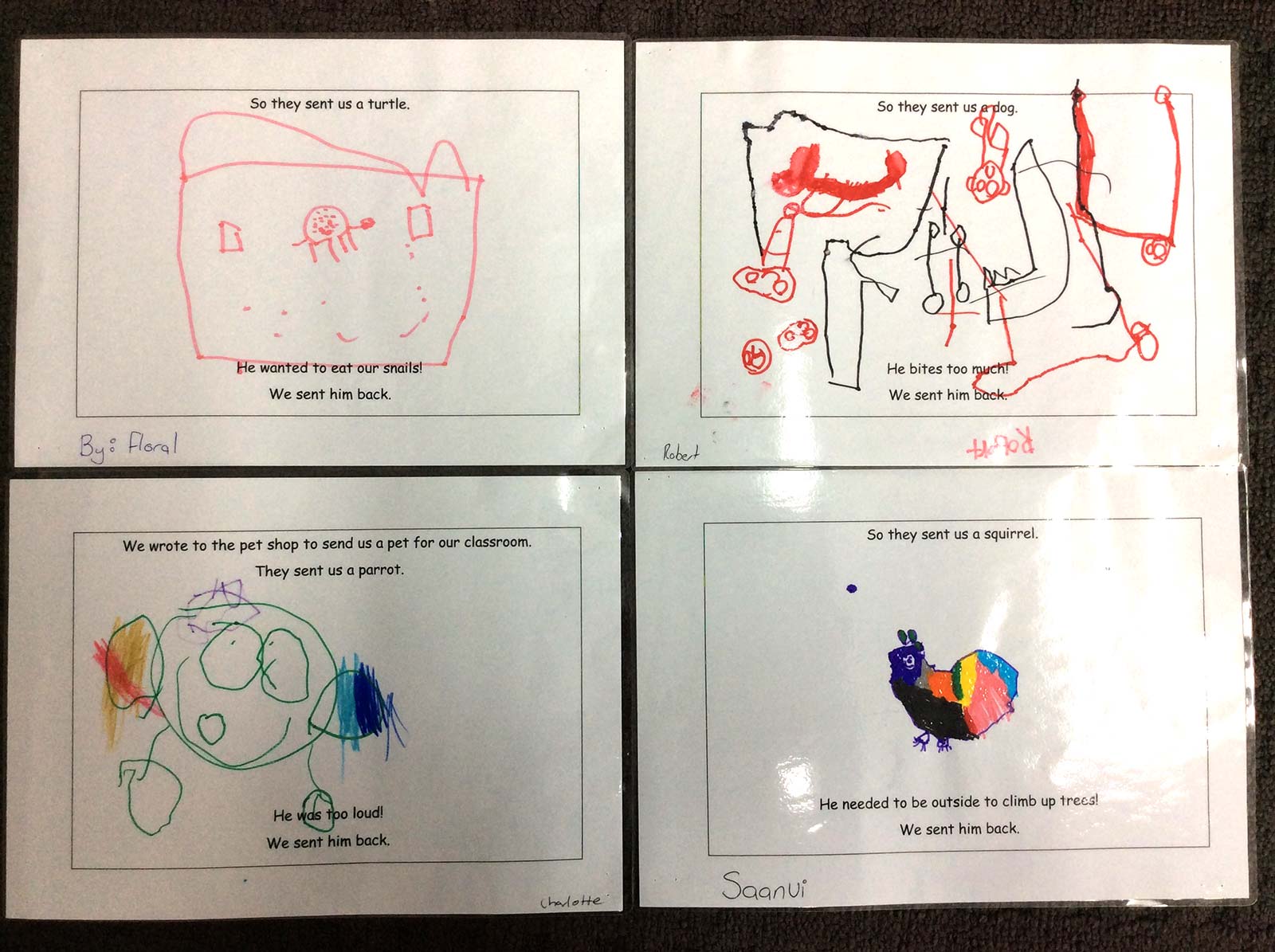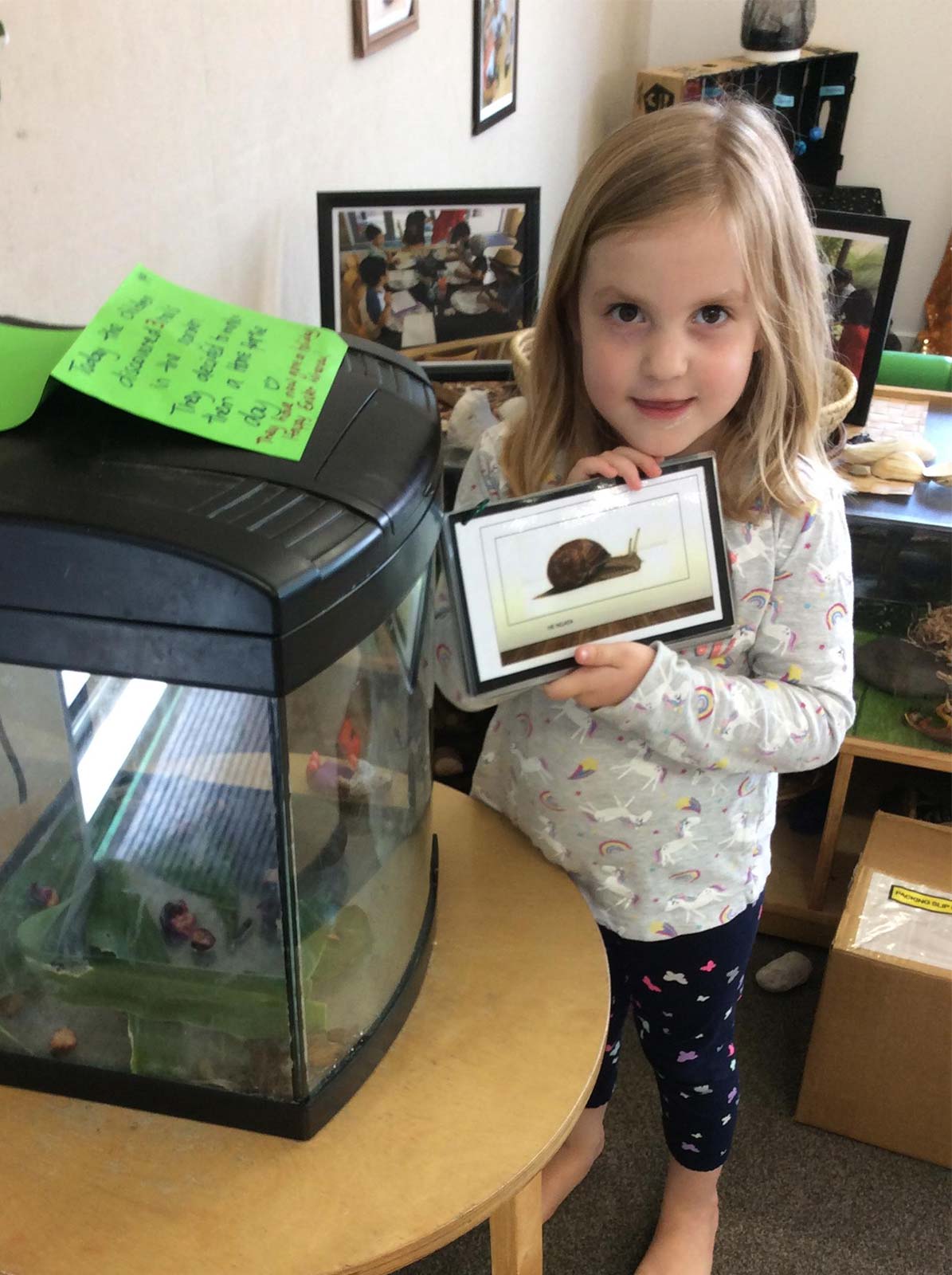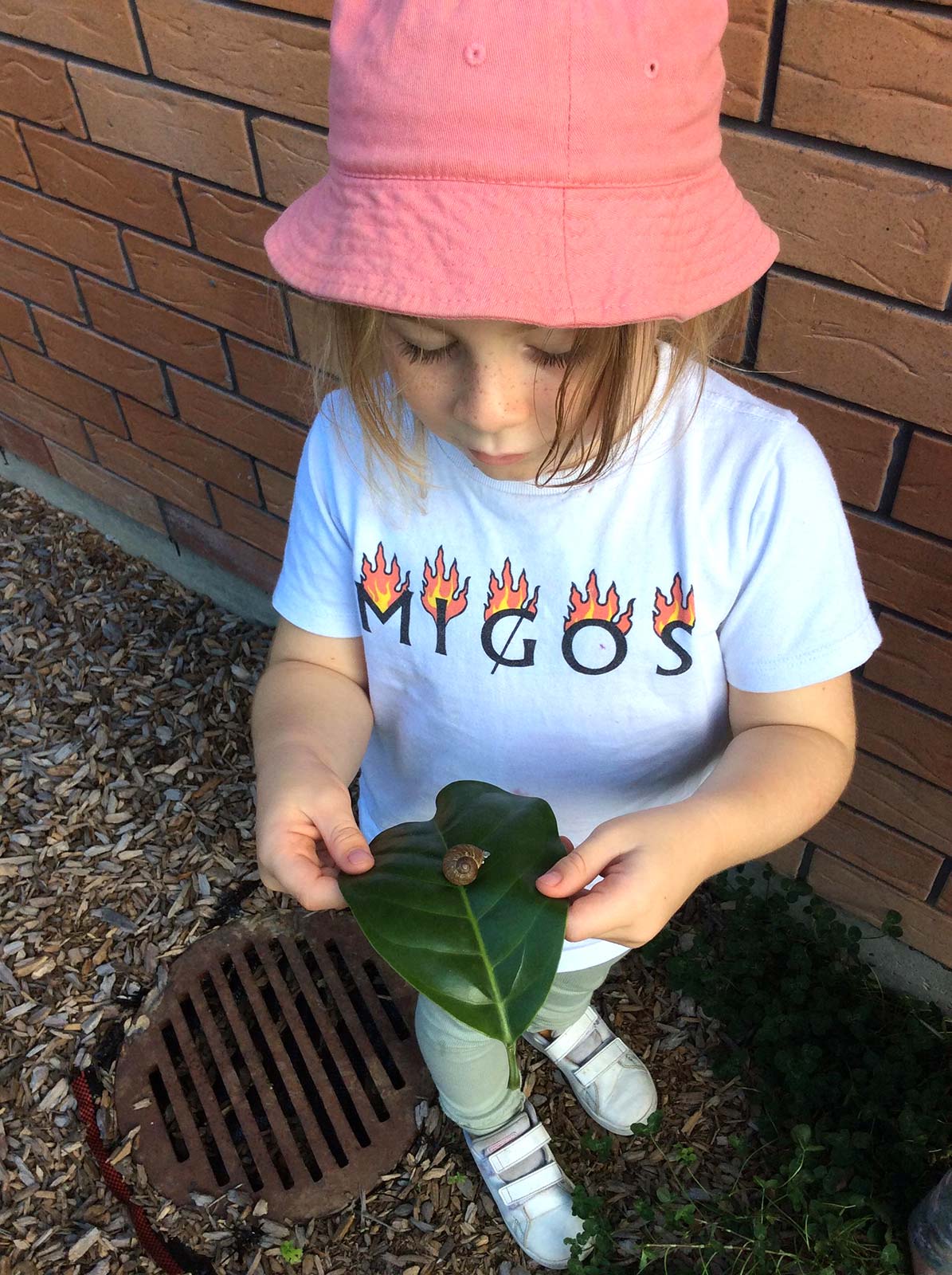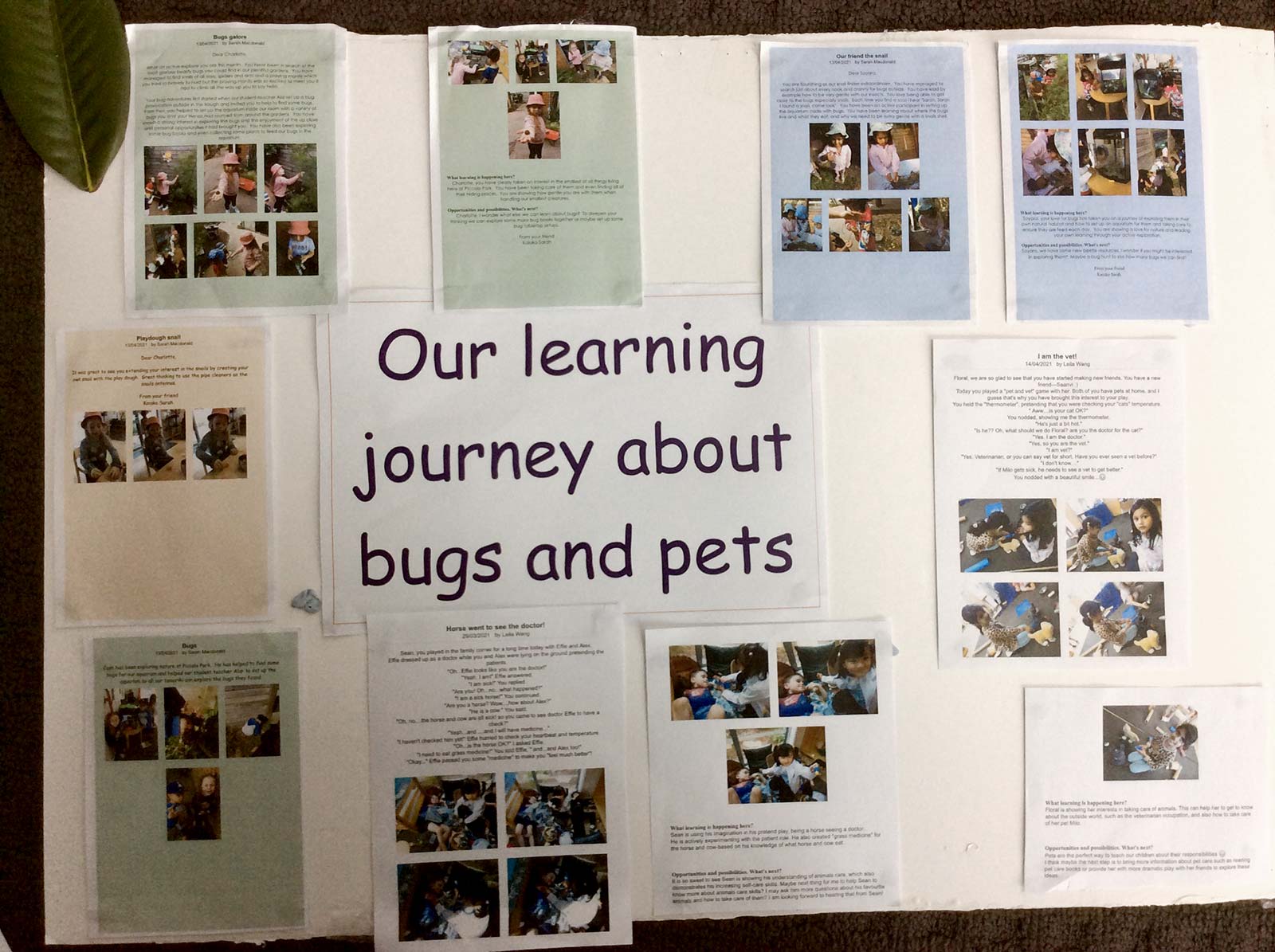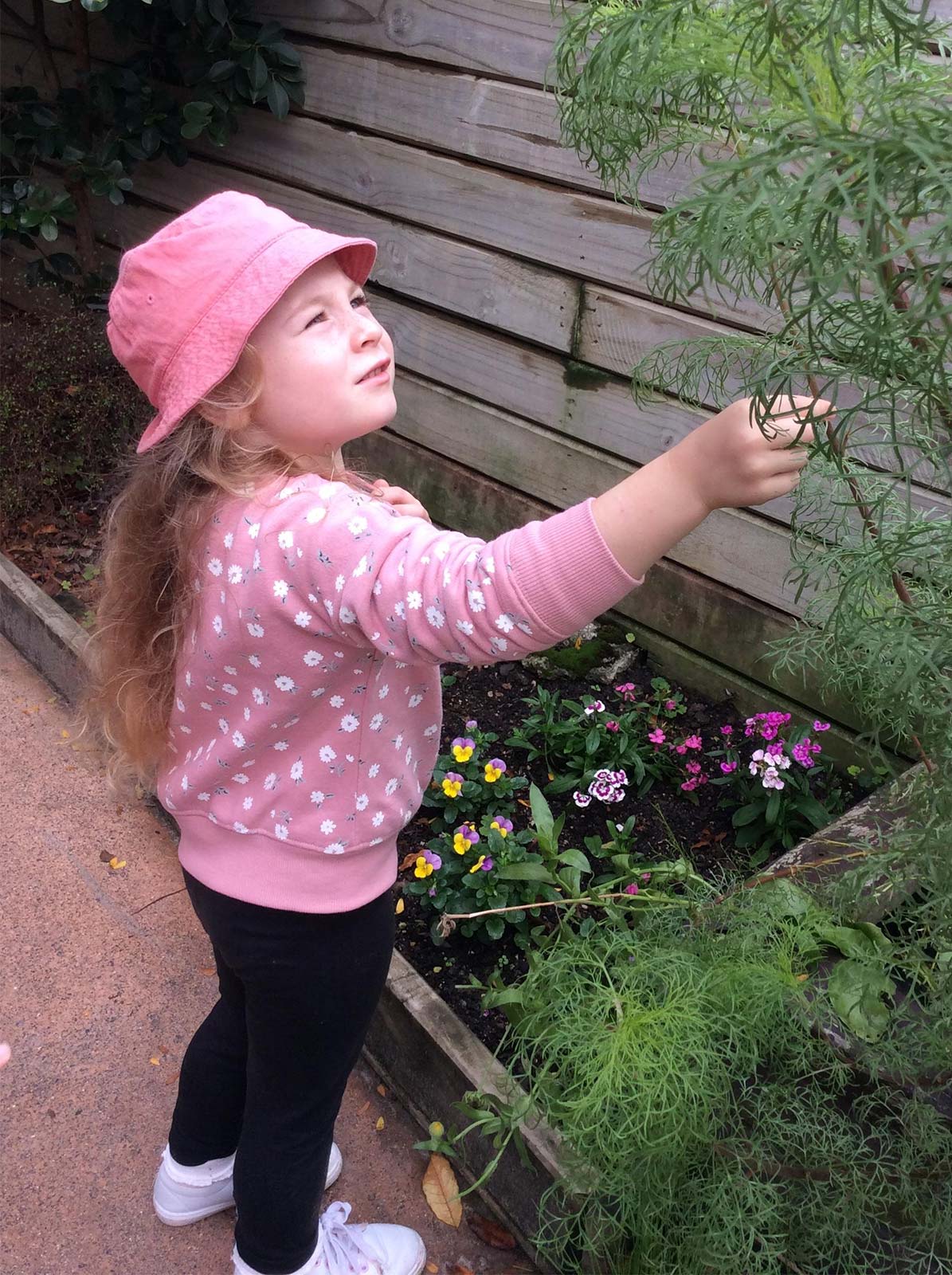Over the past couple of months at our Mount Wellington Centre, the children have been interested in finding bugs in our outdoor environment. Our children are naturally curious and innately drawn to the natural world. To deepen the children’s learning about the world around them we have been setting up inviting and stimulating provocations to encourage the children to explore their interests further and thus foster their deepening knowledge of being kaitiaki (Guardians of the land) and building on their manaakitanga (Caring for others).
Bugs!
Through fun activities, the children found lots of bugs, especially snails. This led to the children setting up an aquarium for the snails in our classroom. The children had to take responsibility for their snails. They had to feed them and ensure they had water to survive. This led to the children researching snails and what else they need to survive. The children even made a book about snails which they narrated and illustrated.
Since our children have also been engaged in role-playing taking care of pets and talking about their pets at home our wonderful parents shared photos of the children’s pets so we could display them in our room to encourage more conversations and engagement in caring for pets.
The children’s ongoing development of manaakitanga led us to ask, “Should we get a pet for our room”? We read an all-time favourite book Dear Zoo then asked the children what kind of pet should we get for the room? One child suggested we get a crocodile but through research, they figured out it might eat us! Another idea was a cat, but we thought hard and worked out that it would poop everywhere. We documented the children’s thoughts and ideas and asked them to illustrate a book called Dear pet shop. Through research and sharing ideas we navigated our way through the list of ideas until we came up with the perfect pet…
A fish!
We went on an excursion to the local Animates shop to pick out some fish. Now the children must be responsible for the fish and feed it every day and help to clean the tank. Having the fish in the children’s environment will continue to spark their interest, providing motivation and a catalyst for children’s further inquiry-based learning.
We also engaged the children in sharing their ideas of names for our fish. Once we had written down their voices, we realised there was a common name “Goldie” for the orange fish. As for the brown fish we had to vote on which name the whole classroom preferred with “Timmy” winning the vote.



